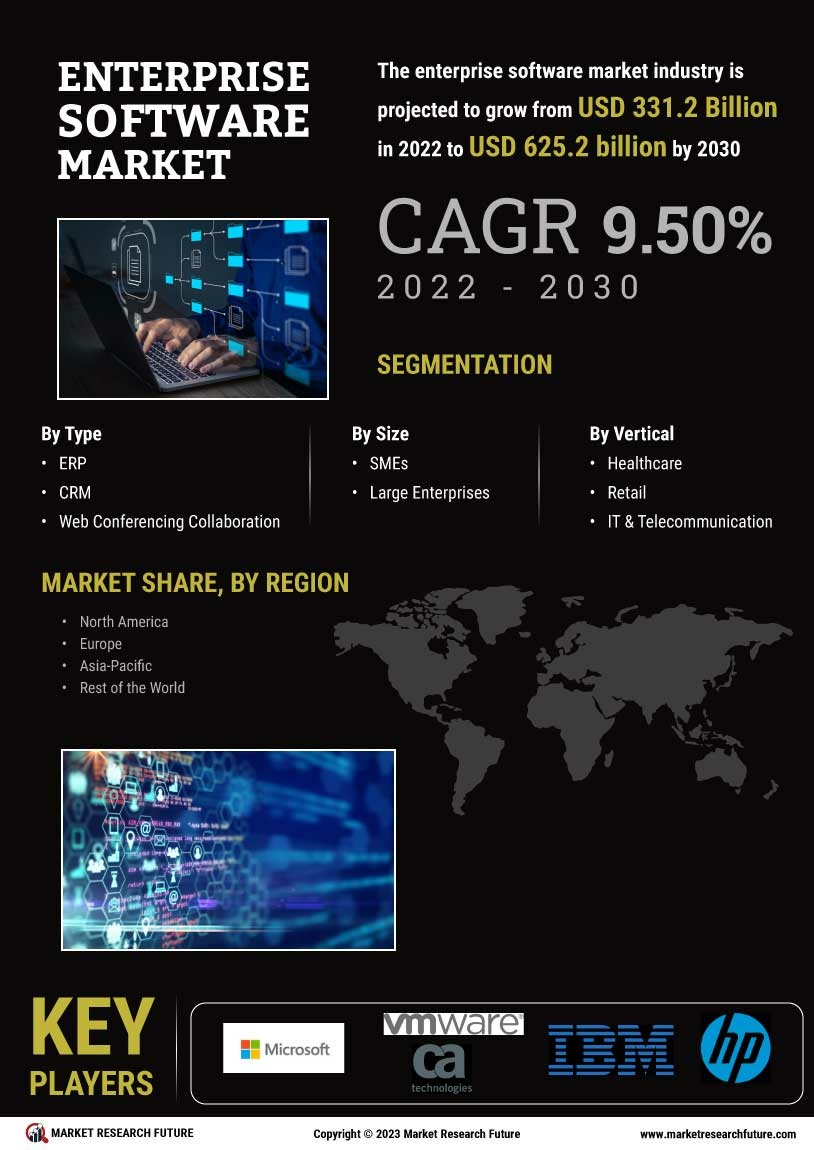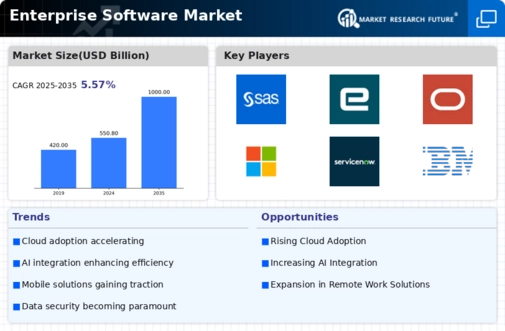Rising Focus on Cybersecurity
In the current landscape, the Enterprise Software Market is witnessing an escalating focus on cybersecurity solutions. With the increasing frequency of cyber threats, organizations are prioritizing the protection of sensitive data and critical infrastructure. The cybersecurity software segment is expected to see substantial growth, with estimates suggesting a market size increase of over 15% annually. This heightened awareness of security risks compels enterprises to invest in robust software solutions that safeguard their operations. As a result, cybersecurity features are becoming integral components of enterprise software offerings, reflecting a broader trend towards comprehensive risk management strategies. The integration of advanced security measures not only protects organizations but also builds trust with clients and stakeholders.
Increased Demand for Automation
The Enterprise Software Market is experiencing a notable surge in demand for automation solutions. Organizations are increasingly seeking to streamline operations, reduce manual errors, and enhance productivity through automated processes. According to recent data, the automation software segment is projected to grow at a compound annual growth rate of approximately 25% over the next five years. This trend indicates a shift towards more efficient workflows, allowing businesses to allocate resources more effectively. As companies strive to remain competitive, the integration of automation tools into their enterprise software ecosystems becomes essential. This growing emphasis on automation not only enhances operational efficiency but also supports scalability, enabling organizations to adapt to changing market conditions.
Integration of Artificial Intelligence
The integration of artificial intelligence (AI) into the Enterprise Software Market is reshaping how organizations operate. AI technologies are being leveraged to enhance decision-making processes, automate routine tasks, and provide predictive analytics. The market for AI-driven enterprise software is projected to grow significantly, with estimates suggesting a compound annual growth rate of around 30% in the coming years. This rapid adoption of AI capabilities enables businesses to gain deeper insights from their data, optimize operations, and improve customer experiences. As organizations recognize the potential of AI to drive innovation and efficiency, the demand for AI-integrated software solutions is likely to continue its upward trajectory, positioning AI as a cornerstone of future enterprise software development.
Shift Towards Subscription-Based Models
The Enterprise Software Market is undergoing a significant transformation with the shift towards subscription-based pricing models. This trend allows organizations to access software solutions without the burden of hefty upfront costs, making it more financially feasible for businesses of all sizes. Recent analyses indicate that subscription-based software revenues are expected to account for over 60% of the total enterprise software market by 2026. This model not only provides flexibility and scalability but also fosters ongoing customer relationships through regular updates and support. As enterprises increasingly favor this approach, software vendors are adapting their business strategies to align with customer preferences, thereby enhancing their competitive positioning in the market.
Emphasis on User Experience and Customization
The Enterprise Software Market is increasingly emphasizing user experience and customization as key drivers of software adoption. Organizations are recognizing that user-friendly interfaces and tailored solutions significantly impact employee productivity and satisfaction. Recent surveys indicate that over 70% of employees prefer software that is intuitive and customizable to their specific needs. This trend is prompting software developers to prioritize user-centric design principles and flexible configurations in their offerings. As a result, companies that invest in enhancing user experience are likely to see improved engagement and reduced training times. The focus on customization not only meets diverse organizational requirements but also fosters a sense of ownership among users, ultimately contributing to the overall success of enterprise software implementations.

















